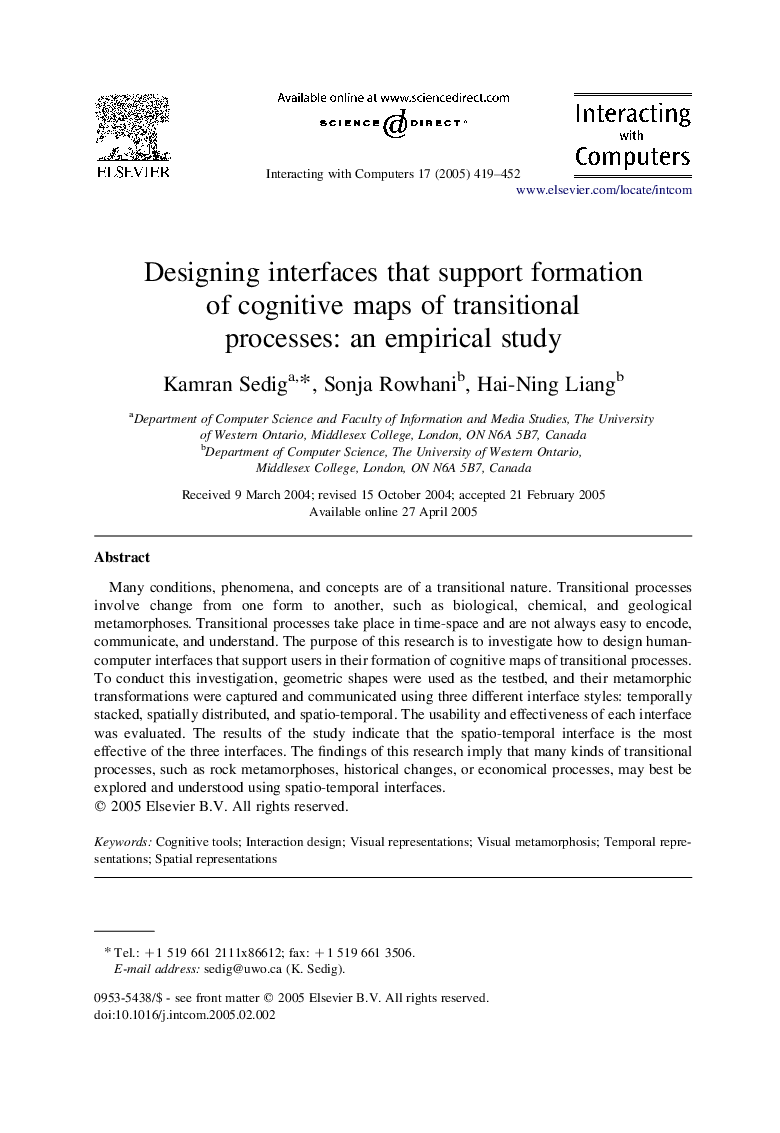| Article ID | Journal | Published Year | Pages | File Type |
|---|---|---|---|---|
| 10367530 | Interacting with Computers | 2005 | 34 Pages |
Abstract
Many conditions, phenomena, and concepts are of a transitional nature. Transitional processes involve change from one form to another, such as biological, chemical, and geological metamorphoses. Transitional processes take place in time-space and are not always easy to encode, communicate, and understand. The purpose of this research is to investigate how to design human-computer interfaces that support users in their formation of cognitive maps of transitional processes. To conduct this investigation, geometric shapes were used as the testbed, and their metamorphic transformations were captured and communicated using three different interface styles: temporally stacked, spatially distributed, and spatio-temporal. The usability and effectiveness of each interface was evaluated. The results of the study indicate that the spatio-temporal interface is the most effective of the three interfaces. The findings of this research imply that many kinds of transitional processes, such as rock metamorphoses, historical changes, or economical processes, may best be explored and understood using spatio-temporal interfaces.
Related Topics
Physical Sciences and Engineering
Computer Science
Human-Computer Interaction
Authors
Kamran Sedig, Sonja Rowhani, Hai-Ning Liang,
